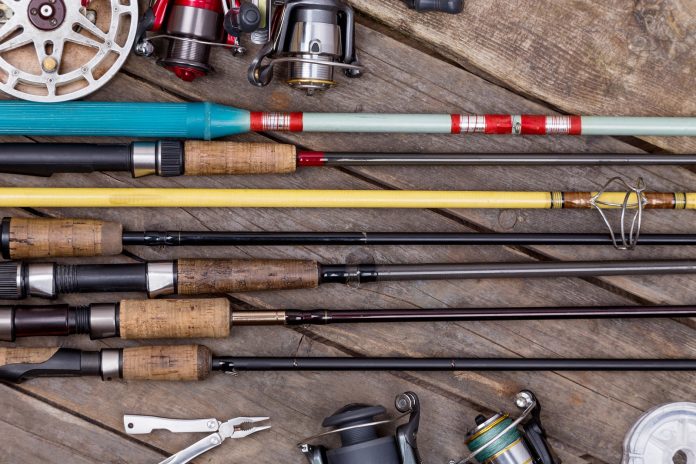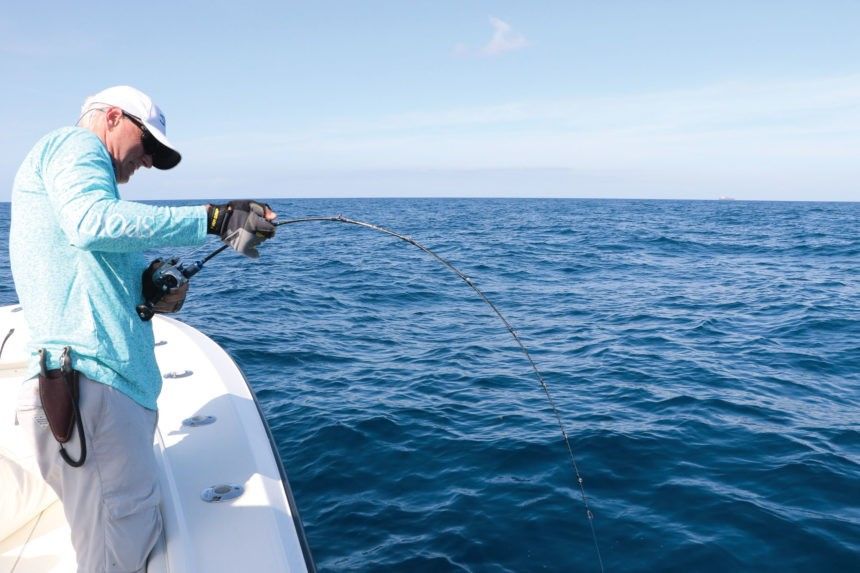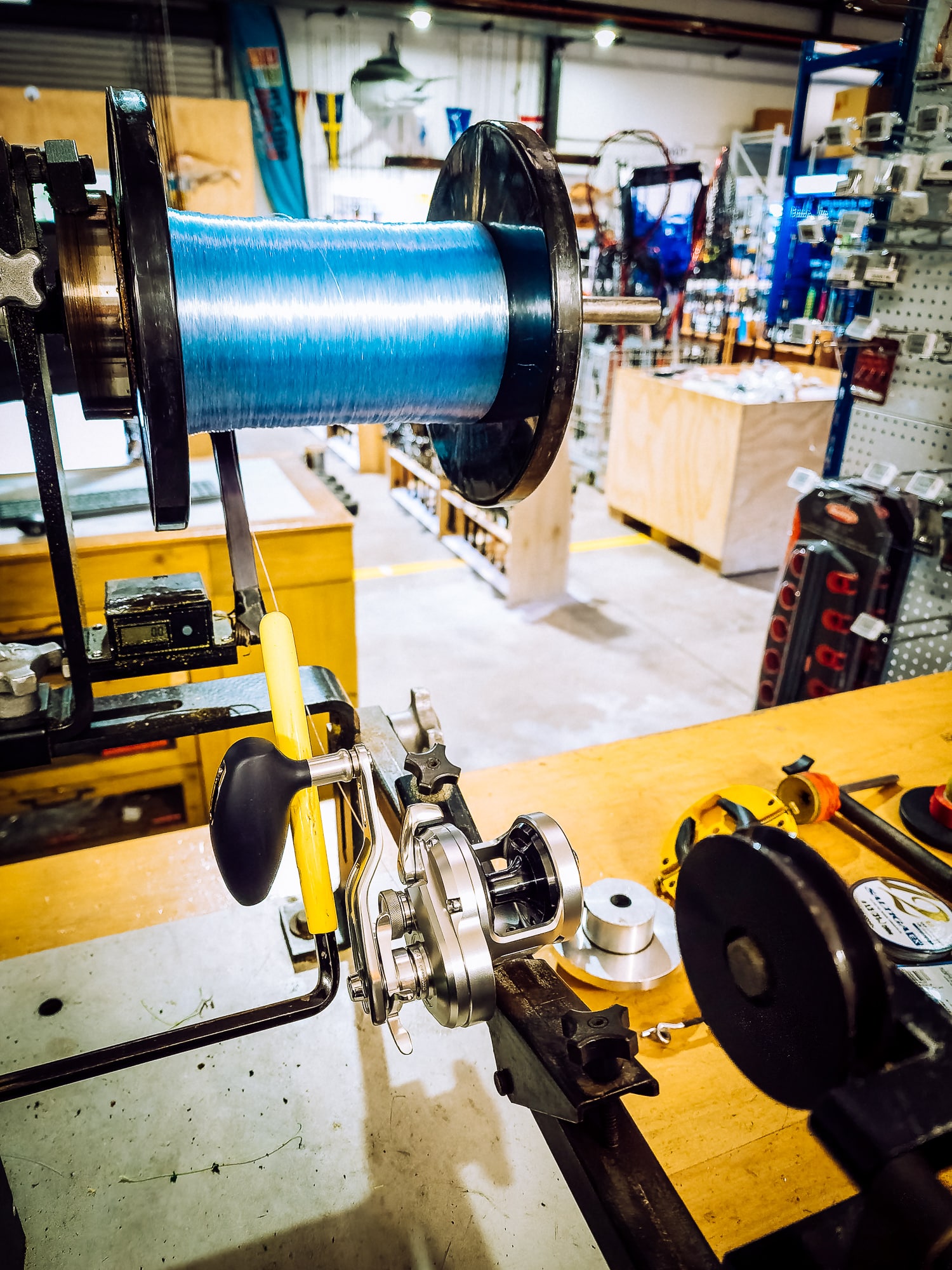
This article…
Is one of a few ‘help’ articles that I write as part of my role as Service Manager at Marine Deals. I am also sharing them here, because it’s often useful information to anyone involved with fishing gear.
In my role with Marine Deals, we receive a lot of broken and damaged rods back for warranty claims. Unfortunately, a lot of the time, the cause of the damage is actually due to owner misuse – often stemming from a fundamental misunderstanding on the proper use of the newer style of Graphite (Carbon) rods.
This is also noted by the suppliers, and many have strict guidelines on the return and replacement of rods.
But, more importantly, a broken rod could mean the end of a fishing trip – or that fish of a lifetime getting away! So – please, take the time to read through our tips and tricks for avoiding a broken rod.
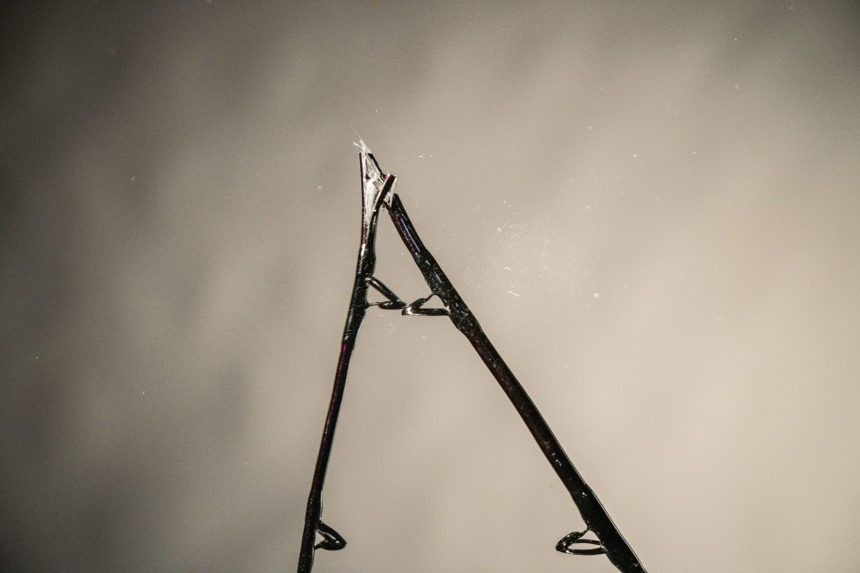
Impact trauma, resulting in internal delamination
When graphite rod blanks are subject to a reasonable impact, the energy from the impact does not disperse and the carbon tube can bruise at the point of impact and begin delaminating, unseen, from the inside of the blank.
The impact can occur as a result of a rod falling from a rod rack onto the floor or another object, during shipping or storage or moving around a retail store. Impact also occurs in transport by the customer, to and from the boat, internally in the boat, resting or impacting the gunwale, smacking into overhead rod racks or canopy’s, sinkers or metal lures constantly hitting the blank and also in rod holders where there is no EVA or cork handle to protect the blank from a metal rod holder edge, quite common with jet-ski rod breakages.
It is therefore a really good idea that you load test your new rod before heading out for a fish. This will allow you to notify us immediately of any damage incurred during shipping. Rods with damage will break on their first or second use, or, ideally, when tested before heading out!
Please read the section below about tip loading before load testing your rod. Simply grabbing the tip and pulling it over and down is a good way of breaking it off!
High Sticking and Tip Loading
Many customers wanting to return their rods (nearly all graphite) will have snapped them off in the first or section – generally the upper third of the rod. This is due to tip loading – placing under levels of stress on the tip – causing it to strain and eventually snap. This is not a warranty issue.
A rod blank is designed to carry any load across its entire length. A rod loaded correctly carries the majority of the flex energy in the thicker butt section and the thinner tip section remains straight, following the direction of the line. When we load only the tip section of the rod, commonly referred to as “high sticking”, the blank is subject to a compression break in the smallest section of the rod that is carrying most of the load.
As a rule, the rod should not be raised more than 45degrees from the surface or the line direction exceed 90 degrees to the butt section of the rod.
This is not strictly due to the weight of the fish, it’s primarily due to the angle and load put onto the rod tip. The customer will often report that ‘it wasn’t even that big of a fish’ – it is quite possible that weight even under the indicated capability of the rod will break it if loaded incorrectly.
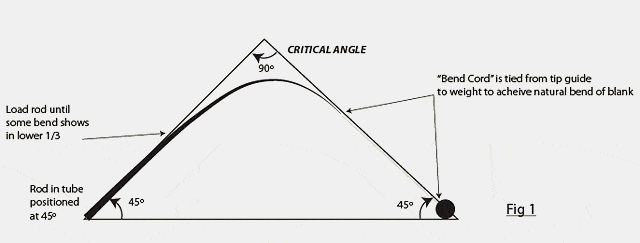
High Sticking
High Sticking is often described as lifting the rod beyond a 45-degree angle into the air – this refers mainly to boat use – as it’s important to remember that it’s the angle of the rod itself, not the angle it’s physically held that can cause the tip to load. If the fish is way out into the distance (i.e. surf casting) then even if the angle is holding the base of the rod straight up, the tip is potentially still not over 90 degrees of angle to the base.
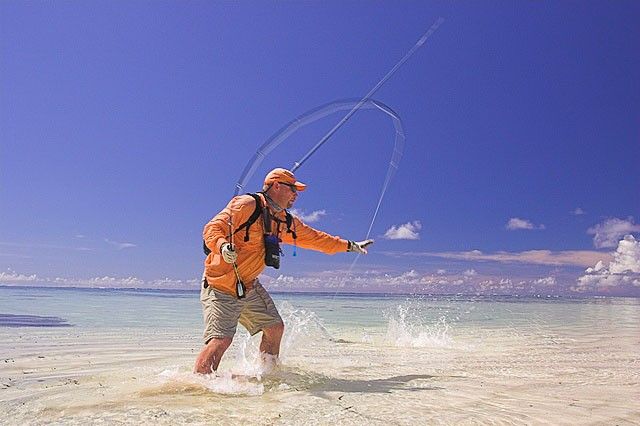
By contrast, it could be possible to point load a rod by holding it at 45 degrees, if the fish ran under the boat, pulling the line down and towards the angler.
Clearing Foul/Snags
Some anglers will simply tighten up the drag on the reel and haul the rod backwards over their shoulder to pull the hook out of foul or off the rocks. This can sometimes be accompanied by a pumping action as the angler gets increasingly frustrated.
This may have worked (and sometimes still does) on the fibreglass rods – but it is a good way to snap a graphite rod.
Much better to hold the rod and reel ‘in line’ with the direction of the line and walk backwards.
Storing lures/hooks on the rod
When travelling from place to place, some customers will take the hook and pull it down to hook it over the reel handle, bail arm or some other spot. If the line is too tight and the drag turned up, this can also pull the rod’s tip over, essentially high sticking it. Compound that with some weight bouncing up and down and we have another good setup to snap a rod tip.
Landing Fish
Landing a fish in a boat is another time where it is quite easy to point load and snap a fish. There are a couple of reasons for this.
Holding High
If we grab higher than the grips on a rod, we reduce its range of motion – moving the stress up from the rod’s base towards the tip – essentially shortening the rod’s action. This often happens as the fish gets towards the boat and the angler is preparing to lift the fish into the boat.
A simple indicator of where to hold the rod is where the foam or cork grips are.
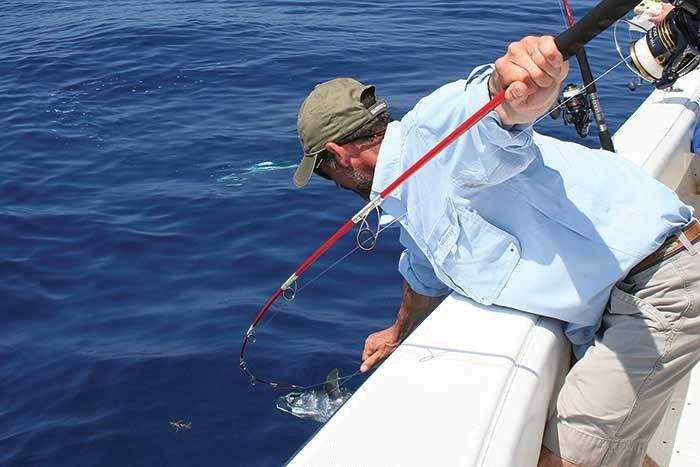
Winding On
If we bring the fish up to the boat and continue to wind in the leader – any movement of the fish, through a last-minute run, or even picking the fish up by the leader the dropping it into the boat – can impart enough stress in the rod tip to snap it.
Ideally, we should be leaving enough line/leader out that we can net or lift the fish into the boat – even better – once the fish is netted or held, releasing the reel to free spool.
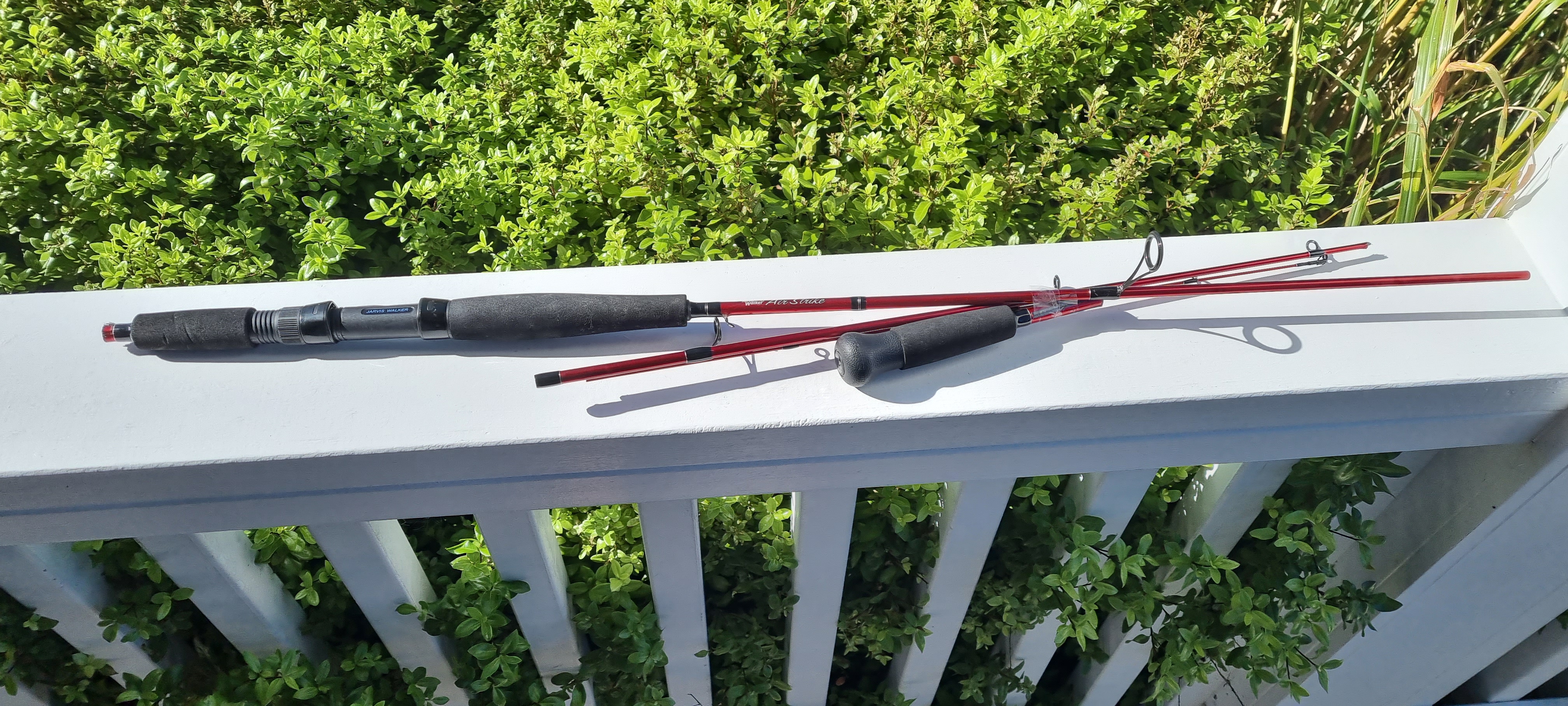
Leaving it in the Rod Holder
A graphite rod, left in a rod holder, that hooks up, will often get a sudden, sharp pull. If the lure or fish is below the boat, this will result in tip loading (and or breaking the base) and potentially snap the rod. This is particularly true if the drag is set up high.
Damaging Guides
Modern rod guides consist of 2 components, a metal stem and a seat holding a round insert. Quality guides such as Fuji, use better materials that are less subject to corrosion. The other benefit of quality guides is the material and method of inserting the round line guide insert. The insert reduces friction on the fishing line and must be tough enough to deal with the heat produced by PE (braided) lines.
Guides that are bent or impacted by a rod dropping on rocks or hitting the side of a boat can either split or bend out of shape dislodging or splitting the insert. If this occurs, the entire guide must be replaced by removing the entire guide by unbinding it from the rod blank.
Check the guides and inserts for cracks or breaks by simply running your fingers around each insert. More than once new rod owners impact their new purchase when putting into the car or simply exiting the shop.
Guides don’t just ‘snap’ for no reason. Much like impact damage, they will fail on their first use if there is a manufacturing defect.
I see a lot of broken equipment coming back in. It’s obviously in proportion to the huge amount of stuff we sell daily throughout the country. However, it’s frustrating to see stuff coming back in that has damage that could have been avoided. No one likes to admit they stuffed up – and I don’t like telling people they stuffed up. But – this isn’t new information within the industry. It’s just that we, as consumers need to learn to use and look after all this new fancy gear, we are always buying!

